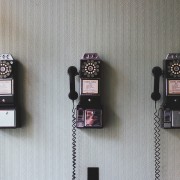Rookie Success
As she was telling me about her new business, her eyes lit up. She had seen an early success gaining a large client and it had propelled her forward with enthusiasm, proving to her that the business world was exciting and success possible.
But as she’s built up her experience, knowledge, and skills it seems that business itself is getting harder.
It’s like, the more she knows about marketing and sales, the more difficult it becomes.
And she has not had another client like that first one in the 18 months since.
Can you relate? I certainly can. Sometimes it seems like our experience and increasing competence can actually hold us back.
So what is this about?
I attribute the “Rookie Effect” to the way we learn and act.
Once we have gained experience in any one direction, it becomes easier to do things that way again and again. In this way our minds learn to think of that as being the most valuable path. Even if it’s not. Even if there are others we haven’t even tried.
Before we have experience, when we are still rookies, all the options seem possible. We decide on the way forward using the data available to us and what seems most appealing. With a healthy helping of “gut instinct” thrown in.
As a rookie, we know that we don’t know. We are actively seeking, looking and learning.
Innovation requires that we regularly re-evaluate the best options, to make sure they still are the best. Put yourself in a rookie’s shoes again.













